Results 10,111 to 10,120 of 12094
Thread: Anandtech News
-
12-04-19, 02:39 PM #10111
Anandtech: Qualcomm Announces Snapdragon 865 and 765(G): 5G For All in 2020, All The
We’re here in Maui for the second day of Qualcomm’s fourth annual Snapdragon summit, for what is probably the most exciting part of the event, as we cover the disclosure of the intricate details of the brand new Snapdragon 865 and 765 SoCs that the company had briefly announced yesterday.
Indeed, this year, Qualcomm isn’t launching just one SoC, but rather two new platforms at the same time. The Snapdragon 865 is self-explanatory in its positioning; as a direct successor to the Snapdragon 855 we expect the new chip to represent the best Qualcomm is able to deliver, and be the silicon that powers most of 2020’s flagship devices. The new top-model this year is accompanied by the new Snapdragon 765 and 765G SoCs. As with other 7-series models since the launch of the new range, the new generation adds of the new features introduced with the new Snapdragon 865, at a lower performance level and a more affordable price for what is becoming an increasingly popular device category.
More...
-
12-04-19, 10:05 PM #10112
Anandtech: Ryzen UCFF-palooza: Multiple PC Makers Now Shipping AMD Ryzen Embedded Sys
While AMD's Ryzen Embedded APUs aren't new, the rate of adoption for them is. AMD unveiled this week that four more manufacturers are now offering ultra-compact form-factor (UCFF) PCs powered by their embedded Ryzen APUs. With systems shipping from ASRock, EEPD, OnLogic, and SimplyNUC, the small form factor boxes can be used for a wide variety of use cases, ranging from home entertainment to business and industrial applications.
ASRock’s 4X4 BOX R1000V UCFF PCs Finally Available
Originally introduced earlier this year, ASRock’s 4X4Box R1000V and 4x4 BOX-R1000M systems come in black Intel NUC-like chassis that packs a motherboard with soldered down AMD’s dual-core Ryzen Embedded R1505G APU with Radeon Vega 3 Graphics or dual-core Ryzen Embedded R1606G APU with Radeon Vega 3 Graphics, respectively.
The systems have everything that we come to expect from a modern PC, including two SO-DIMM slots supporting up to 32 GB of DDR4-2400 memory, an M.2-2260 slot for a SATA or PCIe 3.0 x4 SSD, two Realtek RTL8111G GbE controllers, Intel’s Wireless-AC 3168 module, multiple USB Type-A ports (three USB 3.0, two USB 2.0), three display outputs (two DisplayPorts, one HDMI), and a 3.5-mm audio jack.
AMD’s Ryzen Embedded R-series processors are rated to run for 24/7, so ASRock’s 4X4 Box-R1000M and 4X4 Box-R1000V can be used for applications that need to be always on, such as digital signage, kiosks, and so on. Meanwhile, three display outputs make ASRock's AMR Ryzen Embedded-based systems rather decent solutions for office. Finally, as the boxes include a watchdog timer and are rated to run at temperatures of up to 40ºC, the system can be used for non-extreme industrial applications.
ASRock’s 4X4 Box-R1000M and 4X4 Box-R1000V are now finally available as barebones. Prices of actual systems will depend on their configurations, whereas barebones are now sold at Newegg: the model R1000V costs $309.99, whereas the model V1000M is priced at $409.99.
EEPD’s ProFive NUCR with AMD R1000
EEPD offers ProFive NUCR single-board-computers (SBCs) powered by AMD’s dual-core Ryzen Embedded R1505G or 1606G APUs. The motherboards measure 101.6 mm × 101.6 mm and are designed primarily for industrial-grade embedded systems or custom NUC-like chassis.
EEPD’s ProFive NUCR with AMD’s Ryzen Embedded R1000-series APUs are rated to operate in temperature ranges between 0°C and + 60°C and with a maximum relative humidity of 95% @ 40°C (non-condensing), so they can indeede be used for a wide variety of applications. The SBCs have two SO-DIMM memory slots, three M.2 slots for SSDs or Wi-Fi modules (Type B, Type E, Type M), a SATA header, two GbE ports, two DisplayPort++ connectors, USB 3.1 Gen 1 connectors, a microSD slot, RS-232 and RS-232/485 ports, and GPIO.
The manufacturer says that in addition to embedded, commercial, and industrial applications, its ProFive NUCR with AMD’s Ryzen Embedded R1000-series APUs can be used for vehicles and mobile robots, which greatly expands use cases for the parts as these applications will see a serious growth in the coming years.
EEPD does not disclose pricing of its ProFive NUCR SBCs, but it is obvious that they depend on multiple factors, including volumes and additional options.
OnLogic’s MC510-40 AMD Ryzen Mini-ITX Computer
OnLogic uses one of AMD’s highest performing Ryzen Embedded APU model V1605B with four cores and Radeon Vega 8 graphics. The system is aimed at a range of applications, including those that need more general purpose and graphics horsepower, but may be used for embedded applications and even home entertainment too.
OnLogic’s MC510-40 AMD Ryzen Mini-ITX computer comes in a stylish aluminum + steel chassis that can pack up to 32 GB of DDR4 memory, an M.2-2280 SSD, and a 2.5-inch HDD or SSD. As for connectivity, the system has Wi-Fi or optional 4G support, two GbE ports, four DisplayPort 1.3 outputs, six USB connectors (four USB 3.1 and two USB 2.0), two RS-232 ports, and audio connectors. One of the things that differentiate the MC510-40 from competing Ryzen Embedded is support for an mPCIe socket for expansion.
The MC510-40 machine is certified to work in temperature ranges between 0°C and 50°C, which is wide enough for home/office, kiosks, commercial, and some industrial applications. Meanwhile, the APU requires active cooling, so potentially hot environments will not be suitable for this PC.
OnLogic currently offers its MC510-40 barebones for €656.95 w/o VAT (€794.91 w/ VAT), but when fully configured the system will naturally cost more.
SimplyNUC’s Sequoia UCFF PCs
SimplyNUC’s Sequoia UCFF PCs with AMD’s quad-core Ryzen Embedded APUs come in small rugged NUC-like chassis that can withstand up to 95% of relative humidity as well as temperatures as high as 60°C. The manufacturer says that the systems can be used for a wide range of applications, including edge data analytics, electronic kiosks, and digital signage.
Unlike its rivals, SimplyNUC offers pre-configured Sequoia UCFF systems. The cheaper one is the Sequoia v6 equipped with AMD’s quad-core Ryzen V1605B processor, 4 GB of memory, and a 128 GB SSD. The more advanced one is the Sequoia v8 is based on AMD’s quad-core Ryzen V1807B processor, 4 GB of DDR4 RAM, and 128 GB SSD. Meanwhile, SimplyNUC can further tailor its PCs for needs of a particular customer.
Since Sequoia systems will be used for a variety of applications, the maker equipped it with extensive connectivity, which includes Wi-Fi 5, Bluetooth 5, optional 4G/LTE modem, two GbE ports (controlled using Intel’s i210-LM), two Mini DisplayPort outputs, Serial RS-232/Serial RS-485 video outputs, an optional microSD card reader, and several USB 3.1 Gen 2 ports.
When shipped in default configurations, SimplyNUC’s Sequoia v6 is priced at £445, whereas the Sequoia v8 costs £560.
Related Reading:
- ASRock Reveals Mars UCFF PCs: 0.74-Liters With Intel Core Inside
- ASRock’s 4X4 Box-R1000: A Ryzen-Based 0.87-Liter SFF PC
- ASRock's Super Tiny DeskMini GTX Z390: Up to 9900K with MXM GPU
- Intel Confirms Comet Lake-Based NUC 10 ‘Frost Canyon’ UCFF PCs
- Intel’s Islay Canyon Mini NUCs Available: Whiskey Lake, Radeon 540X, 8GB LPDDR3
- Intel's Bean Canyon (NUC8i7BEH) Coffee Lake NUC Review - Ticking the Right Boxes
Source: AMD
More...
-
12-05-19, 09:29 AM #10113
Anandtech: AIC to Offer Dual Socket 1U with Four 300W FPGAs
Aside from specific events relating to Xilinx or Altera/Intel, we don’t cover much FPGA news. FPGAs by their very nature are very focused pieces of hardware, and it’s usually a binary option if you need one. They can be difficult to build for without the right expertise as well, but if you have the right engineer and the product needs one, then sometimes it’s a very easy sell. In recent months the key noise on FPGAs has been around SmartNICs, 5G network accelerators, and simulation – both Intel and Xilinx announcing new hardware this year relating to the latter. In order to support FPGA developers, AIC was showing off one of its new server builds at Supercomputing.
The key with FPGA simulation is often timing and/or accuracy, and accelerated networking is often latency and co-processor bound. All of these problems can be improved through the density of the hardware. AIC’s new 1U server piles on the extreme density, allowing for two Xeon Scalable CPUs and four 300W FPGAs in 1.75 inches. These are air cooled, and backed by redundant 2000W power supplies.
In the example box on display, AIC showed FPGAs with QSFP+ ports with slots requiring additional memory, making for a very packed server. Each of the PCIe cards with an FPGA are installed via the front panel, which will allow for adjusting the connectivity between servers a little easier. AIC stated that these servers are typically engineered for 5G. We were told that this is where a lot of business is right now, with R&D focused on making sure they have the right silicon design, accelerators, and co-processors in place.
AIC didn’t have a specific SKU name to give to this design just yet, as they are still going through testing and validation, but expect it to be ready for customers soon.
Related Reading- AIC Shows Dual NF1 to U.2 SSD Adapter
- The Reality of SSD Capacity: No-One Wants Over 16TB Per Drive
- AIC’s Grays Peak Server with Intel ‘EDSFF’ Ruler SSDs
- Intel’s EMIB Now Between Two High TDP Die: The New Stratix 10 GX 10M FPGA
- Xilinx Announces World Largest FPGA: Virtex Ultrascale+ VU19P with 9m Cells
Gallery: AIC to Offer Dual Socket 1U with Four 300W FPGAs



More...
-
12-05-19, 09:29 AM #10114
Anandtech: A Success on Arm for HPC: We Found a Fujitsu A64fx Wafer
When speaking about Arm in the enterprise space, the main angle for discussion is on the CPU side. Having a high-performance SoC at the heart of the server has been a key goal for many years, and we have had players such as Amazon, Ampere, Marvell, Qualcomm, Huawei, and others play for the server market. The other angle to attack is for co-processors and accelerators. Here we have one main participant: Fujitsu. We covered the A64FX when the design was disclosed at Hot Chips last year, with its super high cache bandwidth, and it will be available on a simple PCIe card. The main end-point for a lot of these cards will be the Fugaku / Post-K supercomputer in Japan, where we expect it to hit a one of the top numbers on the TOP500 supercomputer list next year.
More...
-
12-05-19, 01:12 PM #10115
Anandtech: Western Digital Starts Sales of WD_Black P50 USB 3.2 Gen 2x2 SSDs
Western Digital has started sales of its WD_Black P50 SSDs that were announced earlier this year. The drives are aimed at the high-performance market and are among the first peripherals to support USB 3.2 Gen 2x2, which offers a full 20Gbps over a USB-C cable.
The WD_Black P50 Game Drive is an external storage device containing an internal NVMe SSD, with capacities of 500 GB, 1 TB, or 2 TB. The device offers a USB 3.2 Gen 2x2 Type-C interface via ASMedia’s ASM2364 USB-to-PCIe bridge, driving peak interface transfer rates of up to 20 Gbps (2.5 GB/s).
As one of the fastest consumer-grade external SSDs available today and among the first 2x2 devices, the WD_Black P50 SSD is on the cutting edge for USB devices. However, as with the launch of any new USB standard, the market starts at 0 for both hosts and peripherals; so the number of hosts that can actually use the drive at its full interface speed is still very limited. The number of hosts will grow over time – we're already seeing 2x2 controllers show up in new Threadripper motherboards – but for those who do not want to pay extra for the USB 3.2 Gen 2x2 technology, Western Digital does also offer the SanDisk Extreme Pro Portable SSD, which uses a more common USB 3.2 Gen 2 interface at 10 Gbps.
Western Digital’s WD_Black P50 external SSDs are currently offered by the company’s own online store with ETA between one and two weeks in the US. The 500 GB version is priced at $149.99, the 1 TB SKU costs $239.99, and the 2 TB model carries a $399.99 MSRP. It remains to be seen whether the drives will make it to retailers like Amazon or Newegg this holiday season, but it makes a great deal of sense for the company to start sales of its high-end product as soon as possible.
Related Reading:
- GIGABYTE Unveils USB 3.2 Gen 2x2 20 Gbps PCIe Expansion Card
- ASMedia Demonstrates ASM3242 USB 3.2 2x2 Controller: Available in August
- The Western Digital WD Blue SN500 SSD Review: Moving The Mainstream To NVMe
- The Western Digital WD Black SN750 SSD Review: Why Fix What Isn't Broken?
Sources: Western Digital, PC Watch
More...
-
12-05-19, 01:12 PM #10116
Anandtech: Qualcomm Snapdragon Tech Summit Day 3 Live Blog: ACPC and XR
The annual Qualcomm Snapdragon Tech Summit is in its final day, and the main focal points for discussion are the Windows on Snapdragon-based Always Connected PCs, with updates to the 8cx family of processors, and the into augmented reality and virtual reality with Qualcomm's efforts in XR being expanded. We're here ready to report, with the presentation set to start at 2pm ET / 7pm UTC.
More...
-
12-05-19, 03:27 PM #10117
Anandtech: AOC’s Agon AG493UCX: A 49-Inch Ultrawide Curved Monitor w/ 120 Hz Refresh
In recent years, displays with an ultrawide aspect ratio have gained traction both among gamers and among prosumers. At first, monitors with a 21:9 aspect ratio were released by a handful of manufacturers, but more recently, most of leading brands launched even wider LCDs featuring a 32:9 or 32:10 ratios. TPV Technology – which makes displays under AOC and Philips brands – was among the first manufacturers with professional-grade 32:9 monitors, so now it's following-up with the gamer-focused AOC Agon AG493UCX.
The AOC Agon AG493UCX uses a 5120×1440 VA panel that features a 1800R curvature, which essentially means that the display offers the same number of pixels and screen real estate as two 27-inch QHD LCDs. Other specifications of the LCD include a max luminance of 550 nits, a 3000:1 contrast ratio, 178º/178º vertical/horizontal viewing angles, a 1 ms MPRT response time, and a refresh rate up to 120 Hz. The monitor can display 121% of the sRGB or 93% of the DCI-P3 color gamuts. Additionally, it comes factory calibrated to a Delta
-
12-05-19, 03:27 PM #10118
Anandtech: Toshiba Announces 6 TB HDDs for Surveillance Applications
Toshiba has introduced a new line of energy-efficient hard drives for surveillance applications. The new DT02-V series HDDs will support up to 32 HD streams and offer capacities of up to 6 TB. The company says that the key advantage that the new drives will provide over its direct predecessors is improved reliability.
Toshiba’s DT02-V family of 3.5-inch hard drives will include models with 2 TB, 4 TB, and 6 TB capacities featuring a 5400 RPM spindle speed, a 128 MB cache buffer, and a SATA 6 Gbps interface. Being aimed at digital video recorder (DVR) and network video recorder (NVR) platforms applications, the DT02-V HDDs support a variety of enhancements, such as ability to record data from up to 32 cameras simultaneously as well as being rated to run 24/7 – including in multi-drive environments.
Performance-wise, Toshiba expects its DT02-V HDDs to offer up to 185 MB/s sustained sequential data transfer speeds. As for reliability, they are rated for up to 180 TB per year workload, 600,000 load/unload cycles, and one million hours MTBF, which is significantly below ratings of enterprise-grade hard drives, but is in line with other HDDs for surveillance applications.
According to Toshiba, its new DT02-V hard drives offer higher reliability compared to the prior-generation low-spin MD04ABA-V HDDs. Overall, the drives offer higher performance at a lower level of power consumption.
Toshiba considers hard drives for surveillance applications as a very important market for the company as demand for such HDDs is expected to grow in the coming years, particularly in China. As a company that wants to expand sales of its storage devices, Toshiba believes it is crucial for it to address growing markets.Specifications of Toshiba's DT02-V HDDs AnandTech.com 6 TB 4 TB 2 TB P/N DT02ABA600V DT02ABA400V DT02ABA200V RPM 5400 RPM Interface SATA 6 Gbps DRAM Cache 128 MB Persistent Write Cache none ATA Streaming Supported Read-Modify-Write ? Sequential Data Transfer Rate (host to/from drive) ? 185 MB/s ? MTBF 1 million Rated Annual Workload 180 TB Acoustics (typical, low power) 22 dBA Power Consumption Operating ? 4.11 W ? Active Idle ? 2.36 W ? Standby ? 0.20 W ? Warranty ? Years
The company is sampling the 4 TB model of the new HDDs today, while samples of 6 TB drives are due in January, and samples of 2 TB SKUs are expected in March. It is unclear when the manufacturer plans to start volume sales of the new hard drives, but it is safe to say that this should happen in 2020.
Related Reading:
- Toshiba to Expand HDD Production: 20 TB & 10-Platter Drives Coming
- Toshiba's HDD Tech Roadmap: A Mix of SMR, MAMR, TDMR, and HAMR
- 18 TB HDDs: Toshiba Collaborates with Showa Denko for MAMR HDDs
- Toshiba at CES 2019: World’s First 16 TB TDMR HDD Debuts
Source: Toshiba
More...
-
12-06-19, 12:10 PM #10119
Anandtech: Arm Server CPUs: You Can Now Buy Ampere’s eMAG in a Workstation
One of the critical elements to all these new server-class Arm processors is availability. We are not yet at the point where these chips are freely sold on the open market: anyone who wants to use them needs to buy a server (or a rack of servers), or rent a cloud instance. One of the benefits of x86 in this space is that users can write code for x86 servers on other easily accessible hardware, then port it up to the big server iron. Well now it seems that one of the Arm licencees playing in the server space has a workstation based product in the hands of distributors ready for software developers to cut their teeth on the hardware.
More...
-
12-06-19, 12:10 PM #10120
Anandtech: Preferred Networks: A 500 W Custom PCIe Card using 3000 mm2 Silicon
Pushing the physical limits of hardware is always a fun story, but I was positively blown away when I saw this poster at Supercomputing. Preferred Networks, seemingly a spin-out from Tokyo University, is shoving several large chiplets into a single PCIe card for peak performance, peak power, and it looks like they’re ready to deploy over 4800 of these cards into a custom supercomputer.
More...
Thread Information
Users Browsing this Thread
There are currently 22 users browsing this thread. (0 members and 22 guests)





 Quote
Quote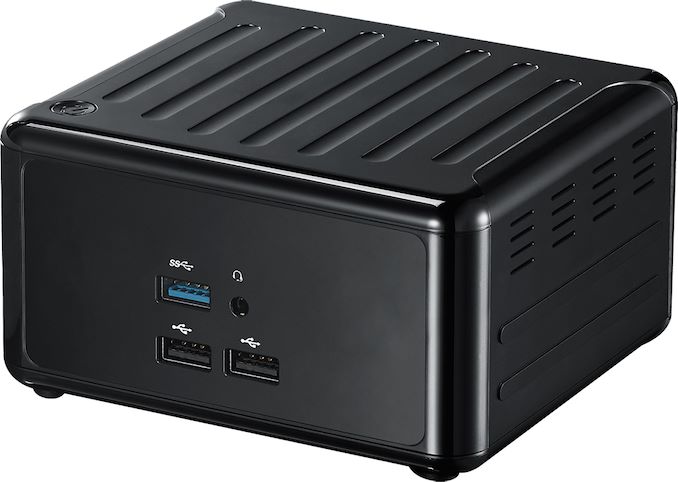



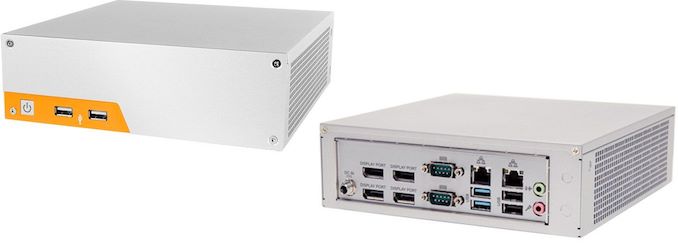


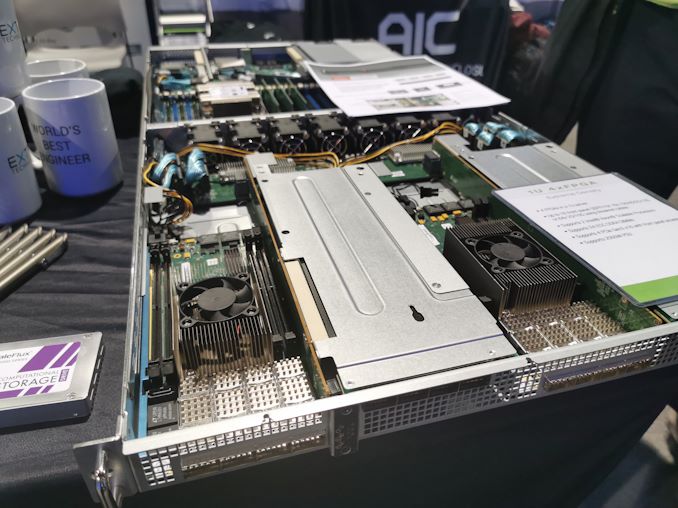
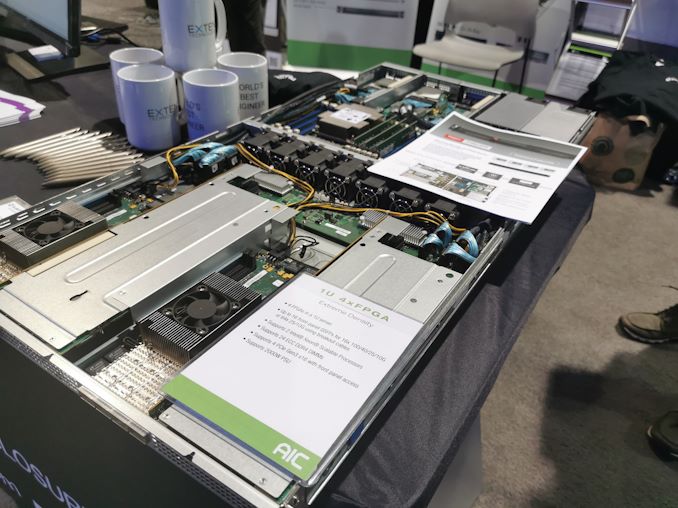
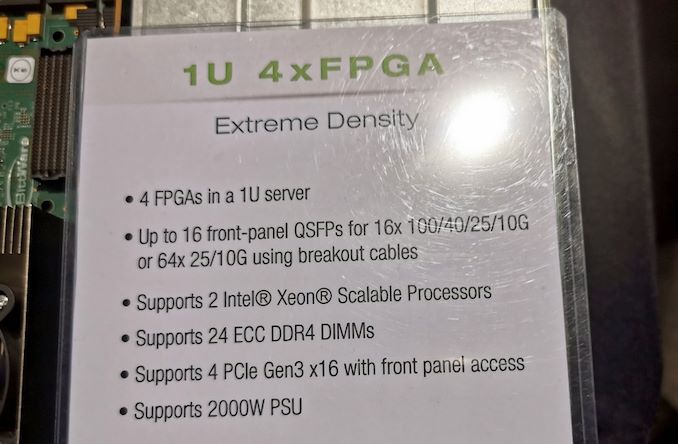
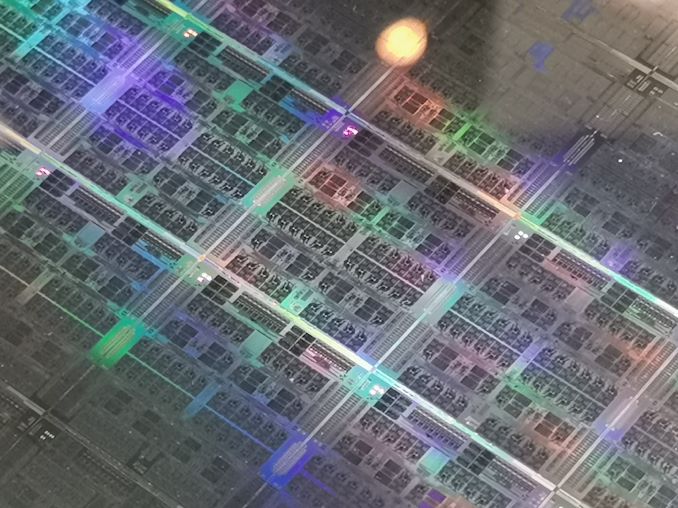
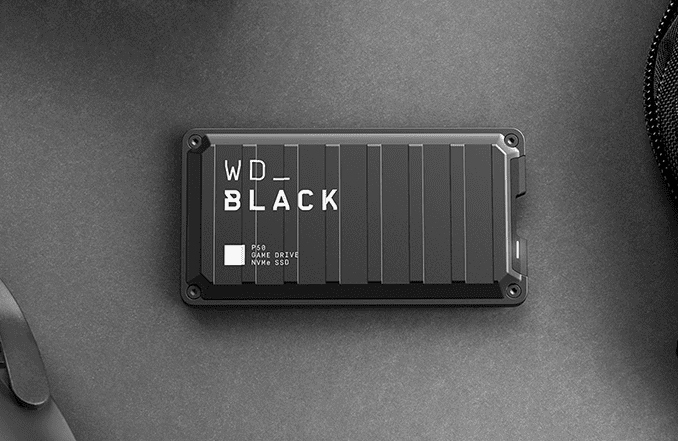



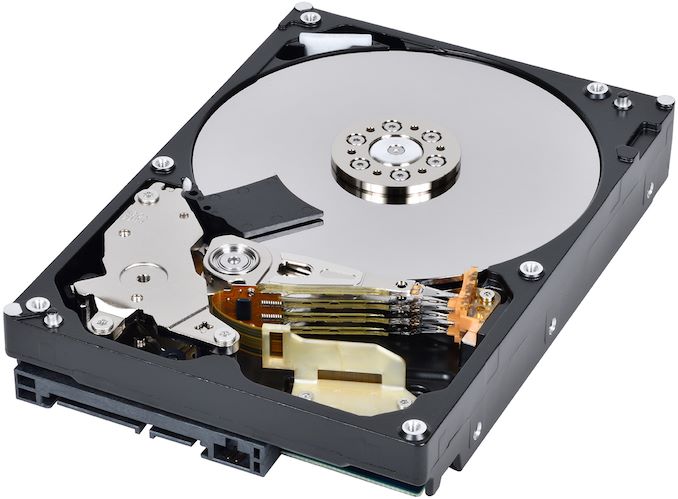
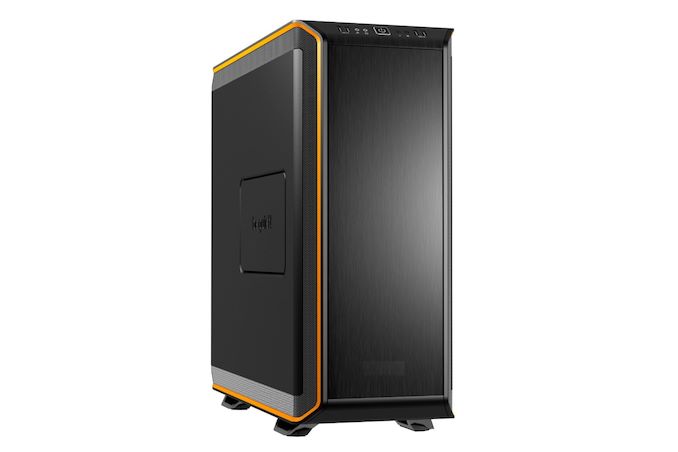

















Bookmarks